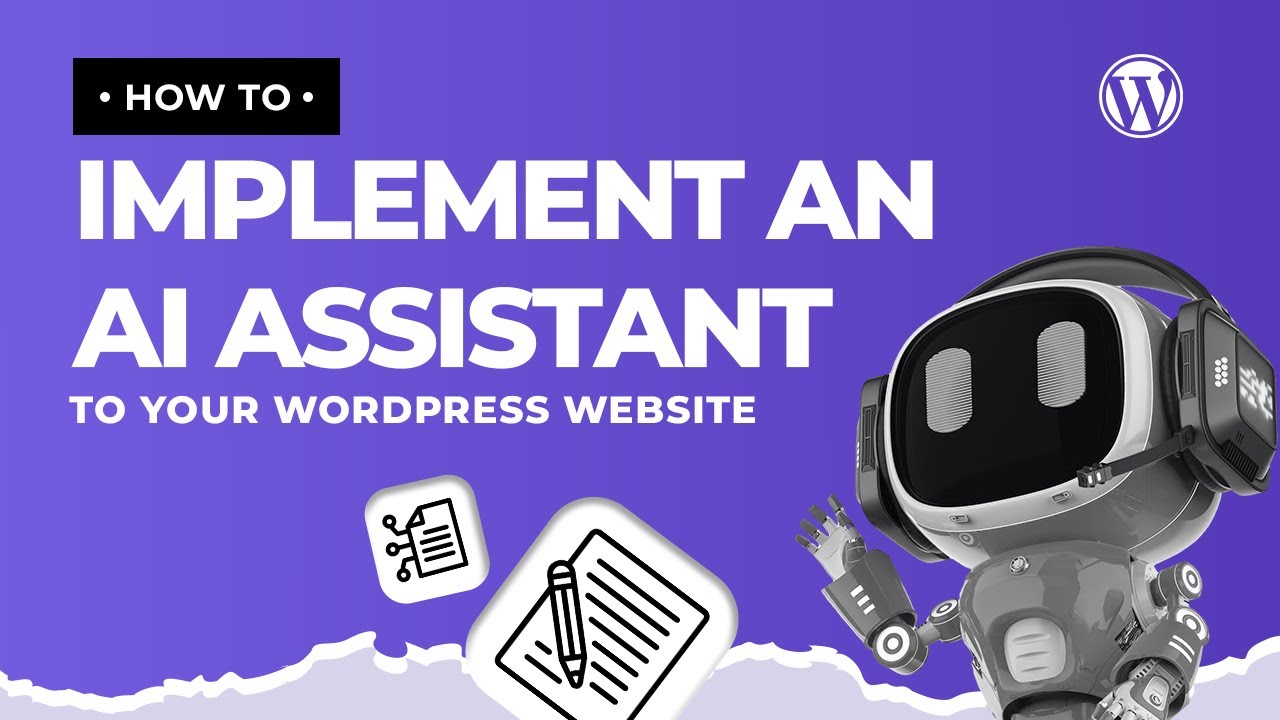Blog
How to Implement an AI Assistant to your WordPress Website

Why Integrate an AI Assistant into Your WordPress Website?
In today’s fast-paced digital landscape, user expectations are higher than ever. Visitors demand instant responses, personalized interactions, and seamless navigation. This is where AI assistants come into play. By integrating an AI assistant into your WordPress site, you can automate customer support, boost engagement, and streamline operations—all while staying ahead of competitors.
AI-powered tools are no longer a luxury reserved for enterprise-level businesses. With advancements in technology, even small to medium-sized websites can leverage chatbots, virtual assistants, and predictive analytics to enhance user experiences. Let’s explore how you can implement this game-changing tool on your WordPress site.
Choosing the Right AI Solution for Your Needs
Before diving into implementation, it’s essential to select an AI assistant that aligns with your website’s goals. Here are two primary avenues to consider:
1. Pre-Built AI Plugins
Plugins are the easiest way to add AI functionality to WordPress. Options like Dialogflow Integration, AI Engine, and WP-Chatbot offer ready-to-deploy solutions with customizable features. These plugins typically include:
- Pre-trained language models for natural conversations
- Drag-and-drop customization interfaces
- Compatibility with popular page builders like Elementor
2. Custom AI Integrations
For businesses with unique requirements, building a custom AI assistant using APIs like OpenAI or IBM Watson offers greater flexibility. This approach requires coding knowledge but allows for tailored responses, advanced analytics, and integration with third-party tools like CRMs.
Step-by-Step Guide to Implementing an AI Assistant
Step 1: Install and Configure Your Chosen Plugin
Navigate to the WordPress dashboard, select Plugins > Add New, and search for your preferred AI tool (e.g., “AI Engine”). Install and activate the plugin, then follow the setup wizard to connect it to your site. Most plugins will prompt you to:
- Define the AI’s primary purpose (e.g., customer support, lead generation)
- Set up response templates for common queries
- Customize the chatbot’s appearance to match your brand
Step 2: Train the AI for Contextual Understanding
To ensure accurate interactions, feed the AI data relevant to your audience. For instance, an e-commerce site might input product descriptions, shipping policies, and return FAQs. Use the plugin’s training module to refine the bot’s language processing capabilities.
Step 3: Integrate with Essential Tools
Connect your AI assistant to existing systems:
- CRM Platforms: Sync chat histories with HubSpot or Salesforce to track leads.
- Email Marketing Tools: Automate follow-ups using Mailchimp or Sendinblue.
- Analytics: Use Google Analytics to monitor user interactions and drop-off points.
Step 4: Test and Optimize
Conduct A/B tests to compare different response styles or chatbot placements. Use feedback loops to identify gaps—for example, if users repeatedly ask about pricing, update the AI’s knowledge base to address this proactively.
Advanced Tactics: Custom AI Development
For businesses needing specialized solutions, integrating a custom AI involves:
1. Leveraging APIs
Services like OpenAI’s GPT-4 or Google’s Dialogflow enable developers to build bespoke chatbots. Use WordPress hooks and filters to embed the AI into pages or widgets.
2. Ensuring Data Privacy Compliance
If your AI handles sensitive data, encrypt communications and comply with regulations like GDPR. Plugins such as WP GDPR Compliance can assist with cookie consent and data handling.
3. Scaling with Machine Learning
Implement machine learning models that analyze user behavior over time. Tools like TensorFlow.js allow real-time adaptation, enabling your AI to predict user intent and improve response accuracy.
Best Practices for Long-Term Success
- Prioritize User Experience: Place the chatbot in a non-intrusive location (e.g., bottom-right corner) and allow users to minimize it.
- Maintain a Human Touch: Offer an option to escalate complex issues to a live agent.
- Regularly Update Knowledge Bases: Sync the AI with updated product catalogs, blog content, or policy changes.
- Monitor Performance Metrics: Track metrics like resolution time, user satisfaction, and conversion rates to gauge ROI.
Overcoming Common Challenges
Challenge 1: Handling Ambiguous Queries
Solution: Program fallback responses to redirect users to help articles or contact forms when the AI can’t resolve an issue.
Challenge 2: Balancing Automation and Personalization
Solution: Use dynamic fields to address users by name and reference past interactions stored in your CRM.
The Future of AI in WordPress
As AI evolves, expect deeper integrations with voice search, image recognition, and predictive analytics. Plugins may soon offer real-time translation for multilingual sites or AI-driven content creation tools. Staying updated with trends ensures your website remains innovative and user-centric.
By strategically implementing an AI assistant, you’ll not only enhance user satisfaction but also free up valuable time to focus on business growth. Whether opting for a plugin or custom solution, the key lies in continuous optimization aligned with your audience’s evolving needs. Start small, iterate based on data, and watch your WordPress site transform into a dynamic, responsive platform.

